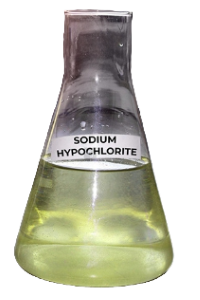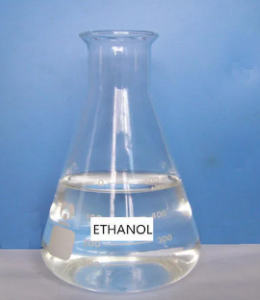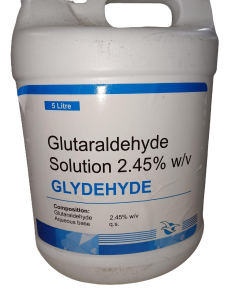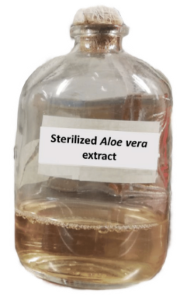The Importance of Sterilizing Gutta-Percha in Endodontic Treatments
Introduction
Gutta-percha is one of the primary materials used for root canal fillings in endodontic treatments (root canal therapy). Due to its direct contact with the internal space of the tooth, which is highly susceptible to contamination by bacteria and microorganisms, sterilizing gutta-percha is of great importance. In this article, we will explore the importance of sterilizing gutta-percha and effective methods for this process.
.png)
What is Gutta-Percha?
Gutta-percha is a natural polymer obtained from the Palaquium tree. This material is highly flexible, making it ideal for use in dental root canal fillings. Given gutta-percha's critical role in preventing bacteria from entering the tooth, its sterility is of utmost importance.
Why is Sterilizing Gutta-Percha Important?
Endodontic treatments directly involve the internal structures of the tooth and the root canal system, which are highly susceptible to infection and contamination. If gutta-percha is contaminated with microorganisms, it can lead to secondary infections and treatment failure. The main reasons for the importance of sterilizing gutta-percha include:
-
Preventing Reinfection: Teeth undergoing endodontic treatment are highly vulnerable to infection due to contaminated root canals. Sterile gutta-percha prevents the introduction of microbes into the root canal system.
-
Improving Treatment Success: Sterilizing gutta-percha increases the success rate of endodontic treatments. Studies have shown that using non-sterile materials can lead to treatment failure and the need for re-treatment.
-
Preventing Future Complications: If gutta-percha is not properly sterilized, infection may occur over time, requiring the patient to undergo repeat root canal treatment or even tooth extraction.
Methods of Sterilizing Gutta-Percha
Due to the sensitivity of endodontic treatments, sterilizing gutta-percha must be done meticulously. Several methods are used to sterilize gutta-percha, including:
1. Using Chemical Disinfectants:
One of the most common methods is immersing gutta-percha in disinfectant solutions. The most common solutions include:

-
Sodium Hypochlorite (NaOCl):
Sodium hypochlorite is recognized as one of the most effective disinfectants in dentistry. It can quickly and thoroughly sterilize gutta-percha, which is crucial for preventing post-endodontic infections. Using sodium hypochlorite solutions with concentrations ranging from 2.5% to 5.25% is recommended, as these concentrations can eliminate microbes without altering the structure of gutta-percha.

-
Chlorhexidine (C₂₂H₃₀Cl₂N₁₀):
Chlorhexidine is a well-known disinfectant in dentistry, used for sterilizing gutta-percha. Due to its antibacterial properties and long-lasting effects, chlorhexidine is a popular choice in this field. It helps maintain the sterility of gutta-percha and prevents post-treatment infections. Studies have also shown that chlorhexidine can be effective in preventing tooth decay in children and adolescents.

-
70% Alcohol (C₂H₆O - Ethanol):
Ethanol 70% is commonly used to disinfect gutta-percha in dentistry due to its strong antimicrobial properties and ability to penetrate the cell walls of microorganisms. This solution can kill bacteria and viruses, preventing the transmission of infections during endodontic treatments. The use of ethanol 70% for disinfecting gutta-percha helps maintain its physical properties and prevents the reduction of its efficiency in dental applications.

-
Glutaraldehyde (C5H8O2):
Glutaraldehyde is recognized as a powerful disinfectant in dentistry and is used for sterilizing gutta-percha in root canal fillings. This chemical compound can effectively eliminate microbes, although it requires more time to take effect. Using glutaraldehyde for disinfecting gutta-percha can help prevent post-treatment infections and ensure the success of endodontic procedures.
These solutions can rapidly eliminate microorganisms.
2. Using Heat:
Some dentists use specialized heat sterilizers that can sterilize gutta-percha without damaging its physical properties.
3. UV Radiation:
Another method involves using UV or gamma radiation for sterilization, employed in some advanced dental practices.


4. Using Herbal Disinfectants:
In the field of gutta-percha sterilization in dentistry, herbal materials like propolis and aloe vera are used. Propolis is known for its antibacterial, antiviral, and antifungal properties, making it effective in disinfecting gutta-percha. Aloe vera is also recognized as a mild disinfectant that can help maintain the sterility of gutta-percha. Using these herbal substances can be considered an alternative to traditional chemical disinfectants.
Conclusion
Sterilizing gutta-percha is an essential and critical step in endodontic treatments, which plays a key role in preventing infections and increasing treatment success. Using appropriate sterilization methods and adhering to hygiene standards can prevent future complications and ensure high-quality dental care.
Keywords:
Sterilizing gutta-percha, Gutta-percha, Endodontic treatment, Root canal therapy, Tooth infection, Root canal filling, Sterilization in dentistry, Methods of sterilizing gutta-percha.

.png)